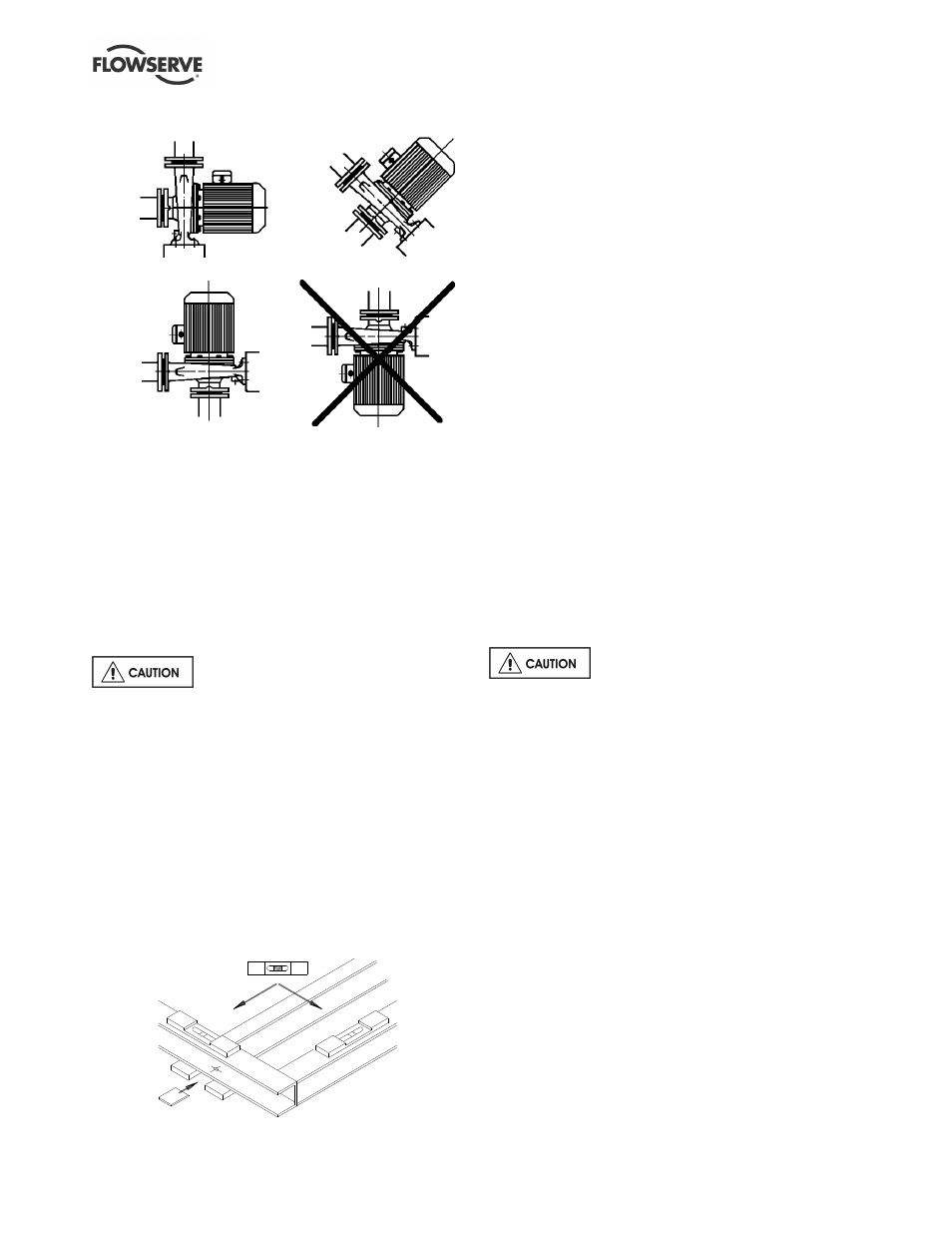Flowserve CPXM User Manual
Page 12

CPXM and CPXRM USER INSTRUCTIONS ENGLISH 71569101 10-08
Page 12 of 32
flowserve.com
Various pump positions are possible. (See diagram.)
It is possible for the pump/motor assembly to be
supported by the connecting pipework if it is suitably
stable and rigid. For hot, damp environments, the
preferred orientation is horizontal.
4.2 Part assemblies
These pumps are not normally supplied in part
assemblies but special accessories such as loose
orifice plates are supplied loose. Ensure these are
incorporated in the final installation.
4.3 Foundation
There are many methods of installing
pump units to their foundations. The correct method
depends on the size of the pump unit, its location and
noise and vibration limitations. Non-compliance with
the provision of correct foundation and installation
may lead to failure of the pump and, as such, would
be outside the terms of the warranty.
Where a baseplate is used, it should be mounted onto
a firm foundation, either an appropriate thickness of
quality concrete or sturdy steel framework. It should
be packed or shimmed underneath to avoid distortion
when pulled down onto the surface of the foundation.
Where supplied, install the baseplate onto packing
pieces evenly spaced and adjacent to foundation bolts.
Level with shims between baseplate and packing
pieces.
If the pump is being directly mounted onto a plinth, it
is only necessary to bolt down the pump foot.
Units fitted with 80 or 90 frame size motors require
bolting down at the pump end only. It is recommended
that bolts (not studs) are used to hold down the pump
feet to permit easy removal from the pipework.
Do not distort the pump when tightening the holding
down bolts. Use shims under the motor feet as
necessary.
All units should be securely bolted down at the pump
casing. In addition, the motor (frames 100 and
above) should be supported under its feet with metal
packing strips.
It is not necessary to bolt the motor to the foundation.
However, to simplify maintenance, it is important that
any packing strips are bolted to the motor feet. This
is so that the motor, complete with packing strips, can
be slipped back along its foundation to gain access to
the rotating element. It is important to bolt down the
pump casing first. The motor should then be packed
or shimmed to support its weight, but it should not put
any undue strain onto the pump casing. (It is not
necessary to support frame 80 and 90 motors.)
These close coupled pumps feature a
back pull-out design. This means that when correctly
installed, the rotating element can be withdrawn from
the casing without disturbing the system pipework.
The use of grouted-in studs to secure the motor feet
prevents back pull-out and will make maintenance
more difficult and time consuming. The procedures in
the above paragraphs should be followed in order to
obtain the maximum benefit from the pump design.
4.4 Grouting
Where applicable, grout in the foundation bolts.
After adding pipework connections the baseplate, if
used, should be grouted in accordance with good
engineering practice. Folded steel baseplates should
be grouted to locate their packing pieces. If in any
doubt please contact your nearest Flowserve service
centre for advice.
Grouting provides solid contact between the pump unit
and foundation, prevents lateral movement of vibrating
equipment and dampens resonant vibrations.
